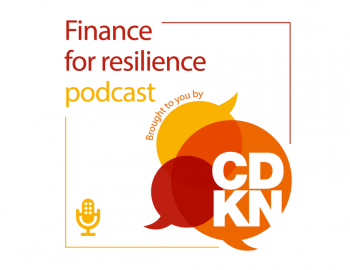REPORT: Biennial Assessment and Overview of Climate Finance Flows 2014
REPORT: Biennial Assessment and Overview of Climate Finance Flows 2014
Governments discuss and negotiate common goals around the causes and consequences of climate change under the United Nations Framework Convention on Climate Change (UNFCCC). Since 1992, industrialised countries have pledged new and additional funding to developing countries to help them meet their climate-related obligations, as stipulated by the UNFCCC.
In Cancun in 2010, the UNFCCC set the goal of limiting global temperature increases to no more than 2 degrees Celsius above preindustrial levels. To achieve this goal, the mobilisation of significant public and private capital for climate-friendly investments and capital reallocation from high-carbon to low-carbon technologies are required.
This climate finance goal has been – and remains – a focal point of the international climate negotiations. Industrialised governments made a specific commitment to increase their flows of climate finance to developing countries to US$ 100 billion per year by 2020.
For such commitments to be meaningful, it is essential to be able to measure the extent to which (i) developing countries fulfil their financial obligations; and (ii) disbursed funds achieve their intended results, i.e. whether the funds are effectively and efficiently deployed in mitigation and adaptation activities. Thus, tracking the delivery of commitments and completing the picture of the climate finance landscape is an essential step towards achieving the 2 degree Celsius target. Such an endeavour requires a clear picture of how much and what types of support are being made available, how the support corresponds to countries’ needs and goals, and whether financial resources are being spent productively. All of these points are critical for improving transparency, thereby building trust among countries and ensuring the effective use of available financial resources.
In 2010, the Conference of the Parties (COP) decided, as part of the Cancun Agreement, to establish a Standing Committee on Finance (SCF) to assist the COP in relation to the financial mechanism of the Convention. One of the mandates of the SCF is to assist the COP with respect to Measurement, Reporting and Verification (MRV) of the support provided to developing country Parties, by means of activities such as the preparation of the Biennial Assessment and Overview of Climate Finance Flows Report. The aim of the BA is to provide the COP with existing information on financial flows against the background of the objectives of the Convention by reviewing existing literature and to provide recommendations to strengthen the methodologies for reporting on climate finance.
The UNFCCC’s Standing Committee on Finance (SCF) has recently made its first Biennial Assessment of Climate Finance Flows Report (BA).
The purpose of this Guide from the CDKN-supported Climate Finance Advisory Service, entitled, Biennial Assessment and Overview of Climate Finance Flows 2014, is to provide a short overview on the findings of the first BA and the recommendations of the SCF to the COP. The Guide also provides some views on how the identified recommendations can support future international negotiations.
Image credit: CIAT


